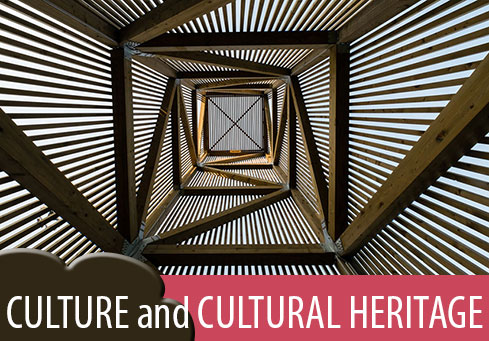Every year, the European Heritage Days invites communities across the continent to share their special stories about Europe’s cultural heritage. The European Heritage Days Stories initiative brings people together to celebrate, share and support the work being undertaken by communities in Europe. The aim is to encourage people to engage with Europe’s cultural heritage and to share insights into how the European dimension of local heritage is understood throughout Europe, thus reinforcing a sense of belonging to the European common space.
Since 2018, the European Heritage Days have collected over 200 beautiful Stories from every corner of the continent. The annual Call for Stories is open to European Heritage Days communities from participating countries, European Heritage Label sites, and EU Prize for Cultural Heritage/Europa Nostra Award winners. The initiative aims to highlight the Stories behind EHD events, and to give a voice to the passionate individuals, organisations and associations who wish to share their local-led achievements in a European context.
This year there were 81 stories submitted from all over Europe. Organisations were able to apply for a grant of up to 10 000 EUR to fund an activity-focused community project based on their story. The judges pored over the entries, and have now selected the projects that promise the most exciting benefits for their communities.
Here are the eleven stories that were selected for a grant award this year:
- Franja Partisan Hospital
A European Heritage Label site, this makeshift partisan hospital, built in 1941 during World War II in a remote gorge in the Cerkno region in western Slovenia, tells the Story of courage, humanity and solidarity. The site is now a symbol of the importance of tolerance, reciprocal understanding and peaceful collaboration among European nations. - Out There King Street Party
This event tells the Story of the transformation of the historic ‘King Street’ area of Great Yarmouth, viewed through the eyes of Portuguese migrant workers who have built their lives there over the last 20 years. The result is a story of a unique neighbourhood, an unusual tale of regeneration in one of the most deprived areas of the UK, and a collection of amazing stories about people and place. - Culture Connects: Nicosia
The Centre of Visual Arts and Research (CVAR) is a museum and research centre in Nicosia, which houses a collection of paintings, costumes, memorabilia, books, and an archive of documents, diaries and photographs. Their mission is to showcase the diverse cultural heritage of Cyprus both locally and internationally, but also to make use of cultural heritage as a resource for promoting cross-cultural understanding, active citizenship and reconciliation among all communities of Cyprus. - Heritage Carers
This project examines the testimonies of the heritage carers who are working along the Route of the Romanesque in Portugal. 44 carers look after and support heritage sites along the Route, preserving them for generations to come. The Story describes these people as ‘cornerstones of the churches, keeping them upright’ and celebrates their contribution to their communities. - Commonlands
Commonlands is the name given to a community mapping project based on 10 small municipalities of Val-Grande-National-Park, an alpine area bordering Italy and Switzerland. Started in November 2016, their goal is to activate local mountain communities in co-designing and managing cultural and touristic initiatives, thereby enhancing local tangible and intangible heritage. - Grandma March Day
The “Grandma March Day” is a traditional celebration of the custom “Martinki” which takes place in North Macedonia on 1 March every year. The Storytellers, HAEMUS, were asked by the Cultural Heritage Protection Office and the Institute of Folklore to support a UNESCO application as a legal safe guardian, and their project intends to protect, educate about and popularise this tradition. - RomArchive
Roma and Sinti are one of the largest minorities in Europe, but their image is marked by stereotypes and prejudices, and little is known of their cultural richness and its intertwining with European culture. RomArchive - The Digital Archive of the Roma wants to change this by making this richness of the arts and cultures of the Sinti and Roma visible, and by illustrating their contribution to European cultural history. - A tale of a river
The Asón river has shaped its corner of Spain for centuries, but the bonds between the elements of heritage left by the river and the area’s shared history are becoming weaker and weaker. The LAG Asón-Agüera-Trasmiera has engaged in the task of reversing that trend: encouraging children to observe and draw, listening to and recording the elderly tell their own stories of life by the river, and promoting direct knowledge by walking, telling and listening. - Home for Cooperation
Nicosia, the capital of Cyprus, is the only capital in Europe that has remained divided since the collapse of the Berlin Wall. The Home for Cooperation is an inter-communal hub dedicated to peace building. The Home for Cooperation has witnessed decades of division and now stands as a bridge-builder, with its own Story to tell. This is the Story of how conserving a building of shared cultural heritage can provide the ground on which communities can build on, to collectively heal trauma and create new possibilities. - Drainspotting
This Story looks under the pavements and streets of Sheffield, England, to discover the story of how industrialisation, urbanisation and planning shaped and reshaped the city that stands today. Focusing on unassuming features such as manholes, drains and service portals, which we often ignore, it tells a Story of how a city developed, how its citizens were protected from disease and how a hidden network of pipes, culverts and wires connects us to each other. - One name, one life, one sign
The Last Address Georgia project is a public initiative aimed at perpetuating the memory of people who became victims of political repression violence during the years of the Soviet regime in Georgia by placing personal memorial plaques on the façades of houses where victims of oppression lived under the SSR.




